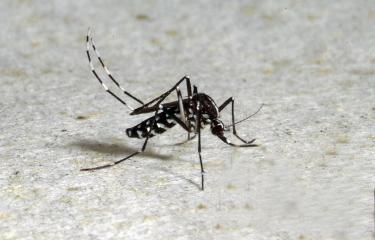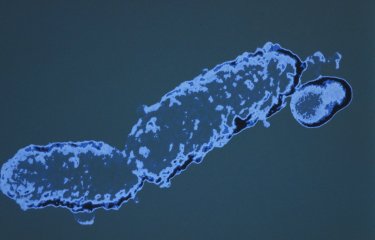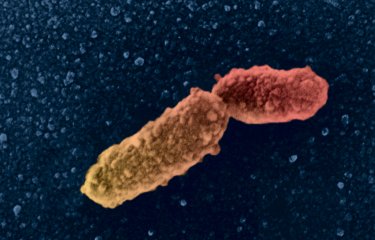Although dengue outbreaks cannot be prevented, it is possible to anticipate them. An international research team including scientists from the Institut Pasteur and Beijing Normal University in China has recently identified a global climate indicator that may help improve predictions about the magnitude of dengue outbreaks several months in advance. This indicator, which can be used for any world region, is based on temperature fluctuations at the surface of the Indian Ocean. Obtaining reliable long-term predictions could facilitate efforts to tackle this infection, which has been on the rise for several decades and threatens half of the world's population. The research results were published in the journal Science on May 9, 2024.
The ability to anticipate dengue outbreaks is crucial in planning control measures against the mosquitoes that transmit the disease and mobilizing hospital staff and equipment. And this is vitally important, because although vaccines have been developed, there is no specific treatment for the symptoms of this "tropical influenza," and the severity of outbreaks can vary hugely from one year to the next. "The dynamics of dengue are complex because the virus responsible for infection exists in four different forms, or serotypes, which can change from one year to the next and one country to the next," explains Simon Cauchemez, joint last author of the study and Head of the Mathematical Modeling of Infectious Diseases Unit at the Institut Pasteur. "So the magnitude of dengue outbreaks can vary considerably from one season to the next."
We now know that the reproduction and infectivity of Aedes genus mosquitoes that transmit dengue viruses, and by extension the transmission rate and scale of outbreaks, are closely correlated with local temperature and rainfall. But these parameters can only be predicted between two weeks and three months in advance, and the quality of forecasts decreases rapidly for longer-term predictions. Global climate indicators like El Niño–Southern Oscillation (ENSO) can generally be predicted over a longer period, beyond six months. An international team therefore decided to study 30 global climate indicators to determine whether monitoring such indicators could help predict dengue outbreaks further in advance.
The team compiled two large datasets: the total number of annual dengue cases reported in 46 countries in South-East Asia and America over 30 years (1990-2019), and also the monthly number of dengue cases in 24 countries over six years (2014-2019). They found that of all the indicators under consideration, the Indian Ocean basin-wide (IOBW) index, which measures temperature fluctuations at the surface of the Indian Ocean, was the global indicator that was most closely correlated to annual dengue incidence in both the northern and southern hemispheres.
“Our results revealed that incorporating the IOBW index into our mathematical model resulted in predictions that closely matched real-world data, compared to the model excluding the IOBW index,” notes Huaiyu Tian, co-last author of the study and Director of the Center for Global Change and Public Health, Beijing Normal University. “The extended lead time and improved predictive ability underscore the significance of the IOBW index in dengue forecasting and early warning systems.”
These interesting theoretical findings will need to be validated in real conditions. "Our aim is to develop predictive models for dengue outbreaks in Guadeloupe, French Guiana and Martinique, and we will now explore whether the IOBW index can effectively improve these predictions," explains Simon Cauchemez. "Climate is not the only factor that influences dengue outbreaks. For these predictive models we will also need to take into account other factors like immunity levels in the population, strains previously in circulation, etc."
If the findings are borne out, the new indicator could help improve the prediction of dengue outbreaks, thereby also improving efforts to tackle this infectious disease, which affects 50,000 million people each year. The incidence of dengue has risen dramatically in recent years, especially in mainland France. Between January 1 and April 19, 2024, 1,679 imported dengue cases were reported to Santé publique France, compared with 131 over the same period in 2023.
Source
Indian Ocean temperatures anomalies predict long-term global dengue trends, Science, May 9, 2024
Yuyang Chen1,2†, Yiting Xu3†, Lin Wang4†, Yilin Liang1†, Naizhe Li3, José Lourenço5, Yun Yang1, Qiushi Lin1, Ligui Wang6, He Zhao7, Bernard Cazelles8,9, Hongbin Song6, Ziyan Liu1, Zengmiao Wang1, Oliver J Brady10,11‡, Simon Cauchemez12‡*, Huaiyu Tian1‡*
1. State Key Laboratory of Remote Sensing Science, Center for Global Change and Public Health, Beijing Normal University; Beijing, China.
2. Yangtze Eco-Environment Engineering Research Center, China Three Gorges Corporation; Wuhan, China.
3. School of National Safety and Emergency Management, Beijing Normal University; Zhuhai, China.
4. Department of Genetics, University of Cambridge; Cambridge, UK.
5. Católica Biomedical Research Center, Católica Medical School, Universidade Católica Portuguesa, Lisbon, Portugal
6. Center of Disease Control and Prevention, PLA; Beijing, People’s Republic of China.
7. CMA Earth System Modeling and Prediction Centre, China Meteorological Administration; Beijing, China.
8. Institut de Biologie de l’École Normale Supérieure UMR 8197, Eco-Evolutionary Mathematics, École Normale Supérieure; Paris, France.
9. Unité Mixte Internationnale 209, Mathematical and Computational Modeling of Complex Systems, Sorbonne Université; Paris, France.
10. Centre for the Mathematical Modelling of Infectious Diseases, London School of Hygiene & Tropical Medicine; London, UK.
11. Department of Infectious Disease Epidemiology and Dynamics, Faculty of Epidemiology and Population Health, London School of Hygiene & Tropical Medicine; London, UK.
12. Mathematical Modelling of Infectious Diseases Unit, Institut Pasteur, Université Paris Cité, UMR2000, CNRS; Paris, France.
*Corresponding author
†These authors contributed equally to this work.
‡These authors jointly supervised the work.









